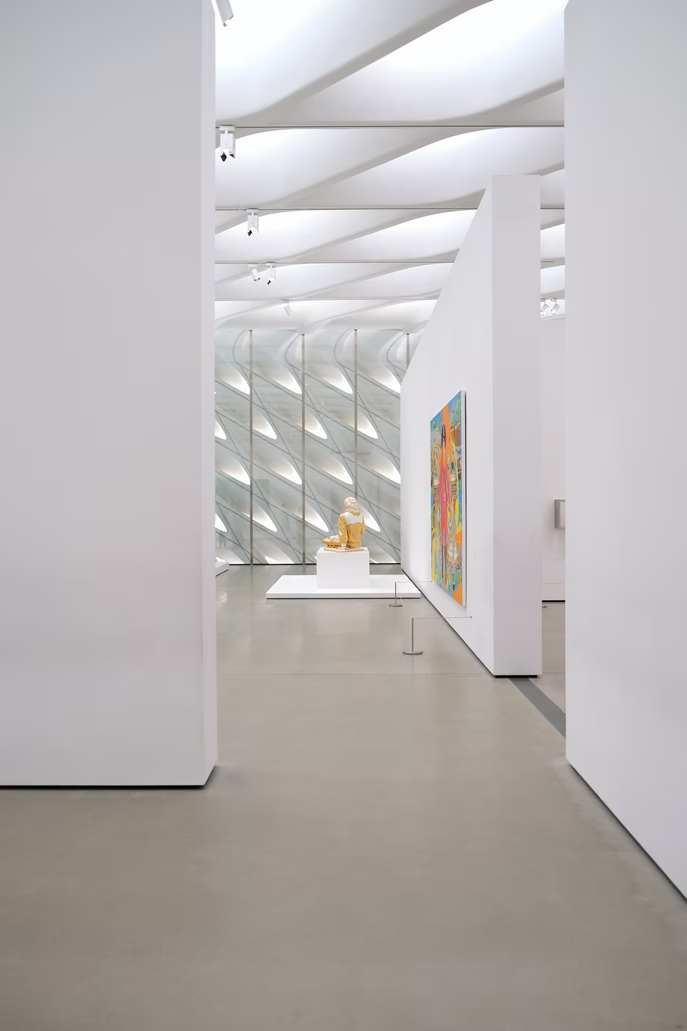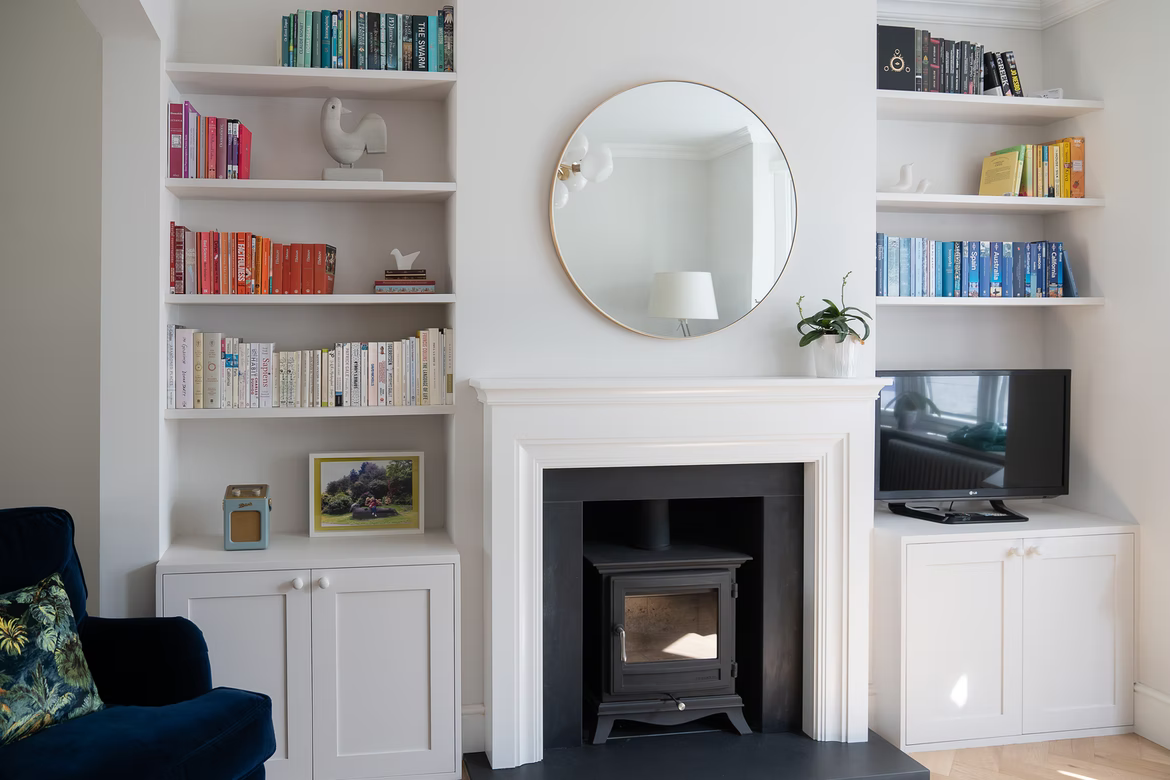ADO list
Project Case Study
Role
Product Designer
Project Type
Academic
(Sep - Dec 2021)
Tools Used
Figma, InVision
Duration
10 weeks
-
ADO is a to-do list app for people with ADHD, designed to help users stop overthinking and start doing.
-
I have ADHD myself and I'm all too familiar with how the symptoms can cause things to get out of control, especially a mess, and I chose to explore this problem space because I saw so many others debilitated and struggling as well.
what’s the problem?
For someone with ADHD, the prospect of even starting what should be a straightforward task can become overwhelming because of Executive Function impairment.
How it feels
Tackling a cleaning project may seem simple, but for those with ADHD, it can spiral into an insurmountable obstacle that becomes a harmful distraction to the person’s environment and mental state.
why it feels that way
Starting and regulating this task is processed by the brain’s Executive Function, which takes until age 25 to fully mature, but is delayed by 30% in those with ADHD.
how long it lasts
Impairment in Executive Function is one of the many symptoms of ADHD that prevent those diagnosed from even the simplest form of cleaning; and 60% of people diagnosed with ADHD remain debilitated by their symptoms from childhood into adulthood.
STEP 1
DOING THE RESEARCH
What to look for?
Before exploring a design solution, we must first research to gain an understanding of how the brain is affected by ADHD and how that impacts the person, their behavior, their surroundings and their everyday life.
-
Prefaced by stating that I am not a scientist and ADHD is a complex neurological condition.
The most consistent finding in ADHD is the overall brain size is reduced along with more specific changes in the Caudate Nucleus, Frontal Cortex, Limbic System, Basal Ganglia, Reticular Activating System
The Caudate Nucleus and other related parts of the brain contain a high density of dopamine receptors but are smaller in those with ADHD.
Dopamine is the thing that helps control the brain’s pleasure and reward center.The Frontal Cortex controls high level functions like attention, executive function, and organization.
The Limbic System regulates our emotions and attention.
The Basal Ganglia processes a lot of inter-brain communication and is deficient in ADHD brains which causes communicative abilities and information to “short-circuit”, which results in inattention and impulsivity.
The Reticular Activating System is the major relay system among many pathways that enter and exit the brain. The deficiency caused by ADHD creates inattention, impulsivity, and hyperactivity.
The ADHD brain has impaired neurotransmitter activity in the four functional regions of the brain mentioned above.
-
ADHD is a neurodevelopmental disorder characterized by symptoms of attention dysregulation, impulsivity and locomotor hyperactivity.
In short someone with ADHD might have trouble managing their focus, can be impulsive, and fidgety. Though not all symptoms look the same in each person. -
Because of ADHD those affected have a harder time managing their attention and self-control.
It can be frustrating and confusing at times and the impaired brain functions can cause those with ADHD to:
Compulsively eat
Misuse and abuse substances
Spend impulsively
Be addicted to screens
Struggle with deadlines
and much more
ADHD is like a buy one get one for mentall illness as so many other factors or their lives are affected by it. 6/10 people with ADHD have at least one or more mental, emotional, or behavioral disorder.
what are my assumptions?
To inform the design process, we first theorize what we believe to be the current user experience.
These were my two primary assumptions while researching.
struggling to start
I believe that people with ADHD are struggling to start tasks. I will know I am right when I see interview responses that mention being debilitated by anxiety that prevents them from starting tasks.
it’s out of control
I believe that people with ADHD feel they lack the ability to self-motivate. I will know this is true when I see interview responses about feeling helpless.
how will i validate this?
In the next phase of my research I conducted interviews with multiple people affected by the problem space.
who can I interview?
To be eligible for an interview, the candidate needed to exhibit all these qualities
neurodivergence
The participant has to have an ADHD/ADD diagnosis and/or suffer from similar symptoms.
“the” cleaner
They must be responsible for or at least do their own cleaning and chores.
an adult
Prefer adults for their insight and their capacity to express and reflect on years of experience.
What people are saying.
“a task might take five minutes but i have to spend ten hours dreading it before i can start.”
— Writing Assistant, 24
“starting at step one is the hardest part because with adhd my brain can’t determine what step one is.”
— Student, 24
“I hate sitting there and feeling worse and worse until my anxiety gets so bad i have to do it.”
— Animator, 27
the key interview insights
After the interviews, I synthesized the results into similar themes, which fell into three categories. As expected, the interviewees universally expressed their own challenges and frustrations as can be seen below.
Motivation
All interviewees described what a struggle it is to even get motivated enough to get to step one of a task, otherwise ending in total avoidance.
-
“I do a lot of sitting there wanting to get things done but I just can’t.”
“In my brain a task will take 5 minutes but I’ll sit there dreading it for 10 hours instead.”
“We don’t get hte same satisfaction as others when finishing tasks, so if I don’t get dopamine why even bother in the first place?”
“I need a more effective sense of control so I can fulfill my needs physically and emotionally.”
“If I don’t do it now, which I struggle with, then it becomes a larger task that requires more effort.”
transitioning
Interviewees expressed each task takes more time than it should and that their strife would be worsened if spread across multiple tasks.
-
“I like being hyper-fixated but it can be a problem when there’s anything else that I need to get done today.”
“It’s so hard to transition between tasks, I feel like I have to tear myself away from what I’m doing.”
“I try to tell myself I can do it and I’ll feel better if I do, even if I know how badly I don’t want to.”
“I just need to turn off my mind and I can end up getting things done, like doing my entire house kind of done.”
“I feel like I’m often forced into doing things that I don’t find interesting and it’s so frustrating.”
Maintaining
Interviewees found that they didn't even notice when their mess got to the tipping point but wished it could stay how they wanted it.
-
“When there’s no more room to pile stuff up then I know I have to make a change.”
“I just need more little tricks to shortcut things I struggling with, like a trash can next to my desk.”
“I don’t want it to get to the point where I feel waves of anxiety where I can’t even function.”
“I don’t feel pride in my accomplishments because they don’t feel like accomplishments.”
“Eventually I just get irritated by the state of things, like not having the things I need or there being bad smells around.”
hypothesis
I believe that breaking down tasks into more manageable starting points for people with ADHD will help them start and finish tasks. I will know this is true when I see people with ADHD reporting that they’ve cut down time spent dreading starting, and are successfully finishing tasks.
before we begin designing we have to consider:
How might we support people with ADHD to become more productive by breaking down tasks and creating more tangible starting points to alleviate executive dysfunction?
STEP 2
synthesising the data
finding a persona
With the data collected and the theme narrowed down, I created the proto-persona, who gives us a person to design for who represents the typical user.
looking for opportunities for intervention
With Eric in mind, I used an experience map to understand his process and reactions when tasked with cleaning, so I can identify opportunities to intervene with my design solution.
Impede cyclical thinking & inspire quicker idea response
As someone with adhd
i want to get started asap so that i don’t start to panic or spiral by overthinking every little detail…
User Stories are statements from the eyes of the Persona's User Role, and are the primary way they use the app to fulfill their needs, which can range from high level wants to specific goals.
These goals are translated into inspiration for features.
STEP 3
inspiring ideas
task flow
We follow the main flow through each screen, system decision, and details on Eric's choices, as he begins and completes his to-do list using the app’s suggestions.
Another task flow discovered during this was how Eric might get more snoozes, this was developed but won't be focused as it's not relevant to the flow we've depicted.
putting pen to paper
We did sketches and started with a basic to-do list and a general idea of design goals, then factored in how a user’s choice might impact the flow.
from sketch to wireframes
In the wireframe phase, we formalized the layouts and concepts ideated in the sketches to create a mid fidelity wireframe, which is a functional prototype suitable for user testing.
stress testing with user tests
The User Tasks are specific scenarios participants were asked to complete where we record their response, reactions, methods, and their solution. Any insights found during the tests would get analyzed and used towards upcoming iterations.
completing the actions
The idea behind the app was largely Tinder inspired, where you could swipe the cards to complete or snooze. Tinder also has buttons on the footer that allow users to do the same action without doing the motion.
Using the checklist
A symptom of ADHD is not being able to break down the task at hand and instead viewing it as a whole. The tags are meant to be little checklist/reminders of things that might be in the user's mind but they're otherwise unable to focus on.
getting a glimpse of functionality
I assumed that users would expect to see a list of tasks; to test that, I made sure to keep special note if/how they navigated to other pages.
All feedback received from both user testing sessions was organized and placed on a prioritization matrix. A "Priority Matrix" is used in design to synthesize our feedback into actionable changes and illustrate which ones we should prioritize in order to get the most out of our time.
major Change
The header nav originally contained icons to identify each page as well as user details that displayed their current progress. After the user tests advised that the page icons weren’t immediately recognized, I replaced the progress details and replaced them with the page name.
major Change
To some testers the tags usage and interactivity weren’t immediately obvious, so the style of the tags changed to resemble a more typical list format.
other Change
After advice from my educators I removed some of the content surrounding the calendar features as I was way over scope.
other change
The rewards page was reworked as the progress page
other change
To alleviate some residual confusion around the icons I added an onboarding process that depicted the main actions and provided context.
STEP 4
creating the brand
describing
the feel
After brainstorming some adjectives I wanted the brand to assume, I highlighted the ones I wanted to prioritize.
Action-oriented
adaptive
attentive
cheery
clean
consistent
contemporary
cooperative
deliberate
effecient
encouraging
enthusiastic
focused
friendly
functional
guilt-free
harmonious
intuitive
logical
low-maintenance
methodical
organized
productive
reliable
responsible
routine
straight-forward
structured
unbiased
upbeat
depicting
the look
In a mood board I added images, textures, patterns; anything I felt represented the mood I wanted the brand to evoke and what emotions I wanted the users to feel.








choosing colors
Before considering what colors we might use in our project, we were drawn to these colors based off their importance in color psychology and their effects in a learning setting.
When looking for the second primary color, we wanted to stick with a blue. We were attracted to Purdy's and Sugarfina for their blues, but also liked that they're sort of a reward and they're organized.
The new blue I was looking for needed to be dark as to not be distracting from the secondary color so to find the new blue, we sourced the Purdy's purple and Sugarfina blue and merged them together to get a medium blue that was dark but not desaturated.
primary
secondary
Neutrals
it’s almost there
perhaps one of the most important decisions when creating a brand,
the name…
WHERE WOULD I EVEN LOOK?
I generated a list of possible names, metaphors or concepts that I felt represented the brand and values, that could inspire or become the brand name. The inspiration for the app name had two front-runners that immediately appeared. Sisyphus was the first idea that came, which led to Much Ado About Nothing, which is what we decided to pursue.
SISYPHUS
The Greek tale of a man doomed to carry a boulder up a hill for eternity felt very representative of how ADHD feels, an overwhelming mountain to get over.
MUCH ADO ABOUT NOTHING
Sounds like a poetic way of saying having a lot to do. Those with ADHD are often told they are being dramatic, but who is more dramatic that Shakespeare?
the ado list
ADO /əˈdo͞o/ A state of agitation/fuss, especially over something unimportant.
designing a wordmark
After the initial sketches, I brought the idea to the computer and started experimenting with the design. The two things that I was set on was the shape edges being gently rounded, and the 'O' having the checkmark in it.
An unexpected result was the emphasis on "Do" which went well with the themes.
ado Realized
at last all the pieces come together to make the current hifi prototype
STEP 5
looking ahead
creating a marketing website
With the high-fidelity prototype ready I created mockups of what the marketing website for ADO might look like. The goal was to highlight the app’s concept and why downloading the app would be beneficial to the customer.
Looking ahead
What might be the direction or some of the next steps i could take to complete ADO?
creating the subpages
The Capstone focuses on one flow, but to be fully realized, each subsystem of the app concept needs further development.
adding the gamification
I can return to my aspiration of gamifying chores since the main task flow (swiping/completing tasks) has been fleshed out relatively well. I realized that adding gamification is a flow that needs its own separate development.
making ui tweaks
Given the time constraints, I used public UI libraries from the Figma community but in the next steps, I look forward to creating custom art/iconography to give ADO that creative flair.
some key takeaways from working on this project
conducting user tests with real users
When doing two rounds of user tests I needed 10 participants in total and I asked for any and all volunteers. Most tests were actually done with neurotypical people and so feedback was different from that of people actually affected by ADHD. Because it wasn’t designed with neurotypical people in mind, the user testing raised more questions than expected and it invalidated some of my previously validated assumptions. In future, I will focus on getting testers who are a closer fit to my audience, to get more relevant insight.
staying agile
I went over scope and had to pare down my flow and prototype; this led to needing to strategically
re-think how I could use my current assets without re-starting completely. These challenges reminded me to stay agile, and that the myriad design steps exist to ensure a compelling and functional product.
wow you made it to the end!
If you’re interested in hearing more about this project
or have any questions don’t hesitate to reach out!






















